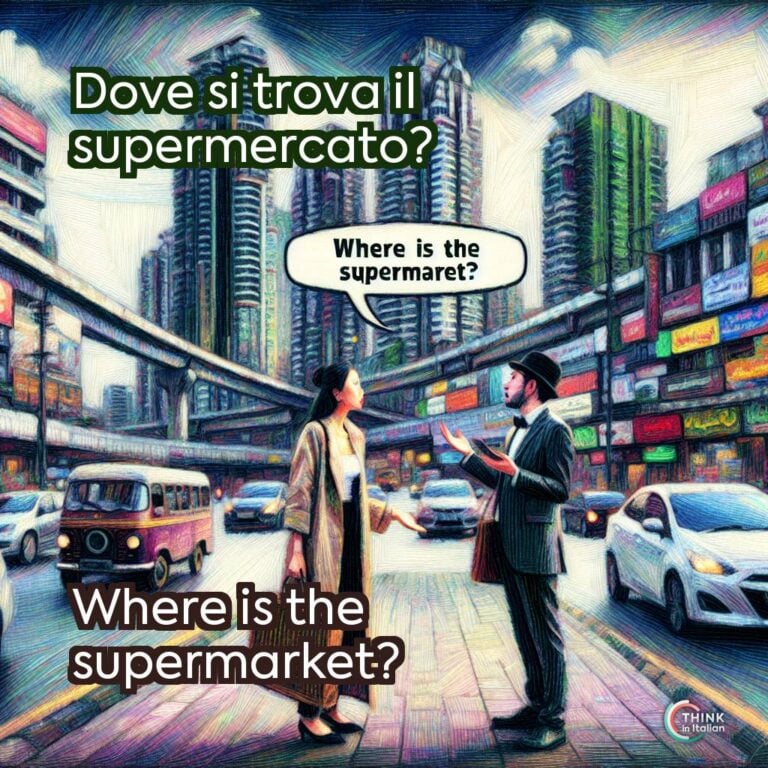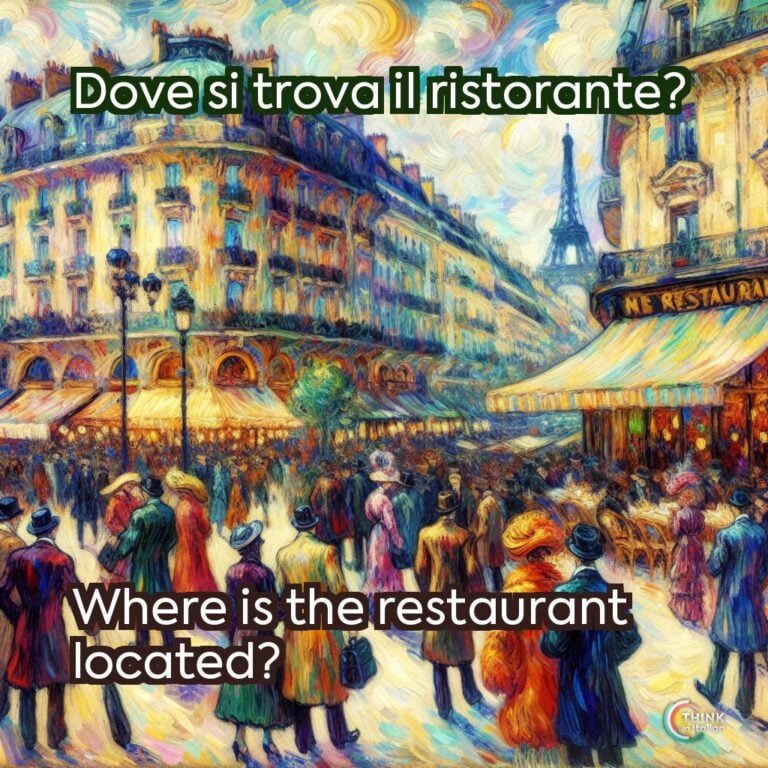“Where” in Italian
As simple as it is, the word “where” in Italian is dove. Linguistically speaking, it is classified as an adverb or as a relative pronoun. In the first case, it is used to ask questions or state exclamations. In the second case, it links two sentences together.
Dove sta il museo?
Where is the museum?
Non ricordo dove ho messo i miei occhiali.
I do not remember where I put my glasses.
It is used in a variety of contexts and is essential to ask about locations, directions, and origins. In this article, I will explore how to use dove in different sentences.
“Dove” in Italian
Simple Questions With “Dove”
One of the first things you’ll need when navigating a new city or interacting with people in Italian is asking where things are. Of course, just like in English, you can combine dove with various verbs to form questions for different situations.
Below, I will show you some examples of how to ask questions with dove:
Dove sei?
Where are you?
Dove abiti?
Where do you live?
Dove vai?
Where are you going?
Dove si trova la stazione?
Where is the station?
Dove stai andando?
Where are you going?
Questions With “Dove” and Prepositions
So far, you saw that dove can be used in straightforward questions. However, it also appears in slightly more complex phrases, especially when combined with prepositions.
Whenever I explain this topic to my students, I always make sure I spend enough time to dive into the details, as these constructions differ from those in English.
In Italian, prepositions often come before the question word, whereas in English they typically appear at the end of the question.
In this context, Italian tends to place the preposition before dove, while English allows more flexibility by placing prepositions at the end of the sentence.
Da dove vieni?
Where are you from?
Da dove arriva questo treno?
Where is this train coming from?
Per dove passi stasera?
Where are you passing through tonight?
Fino a dove dobbiamo camminare?
How far do we have to walk?
Fino a dove arriva questa strada?
Where does this road go to?
Da dove a dove va questo treno?
From where to where does this train go?
“Dove” as a Relative Pronoun
In addition to its role as a question word, dove can also function as a relative pronoun in Italian, specifically to refer to a place. It basically connects a main clause to a subordinate clause that gives more information about a location.
When used in this way, it links two parts of a sentence, often serving the same function as “where” or “in which” in English, for example:
La città dove sono nato è bellissima.
The city where I was born is beautiful.
Questa è la casa dove ho vissuto da bambino.
This is the house where I lived as a child.
Il ristorante dove andiamo spesso è chiuso.
The restaurant where we often go is closed.
The Contracted Form “Dov’è”
In spoken Italian, you’ll often hear dov’è instead of dove è when asking about the location of something or someone. It is simply a contraction of dove and the third person singular of the present tense of the verb essere (to be), è (is).
Dov’è il bagno?
Where is the bathroom?
Dov’è la mia borsa?
Where is my bag?
This phenomenon is an example of elision, where the final vowel of dove is dropped, replaced by an apostrophe, and combined with the following è.
This contraction helps with the flow of speech, making sentences quicker and smoother to pronounce, and is a common phenomenon in Italian, especially when two vowels come into contact.






